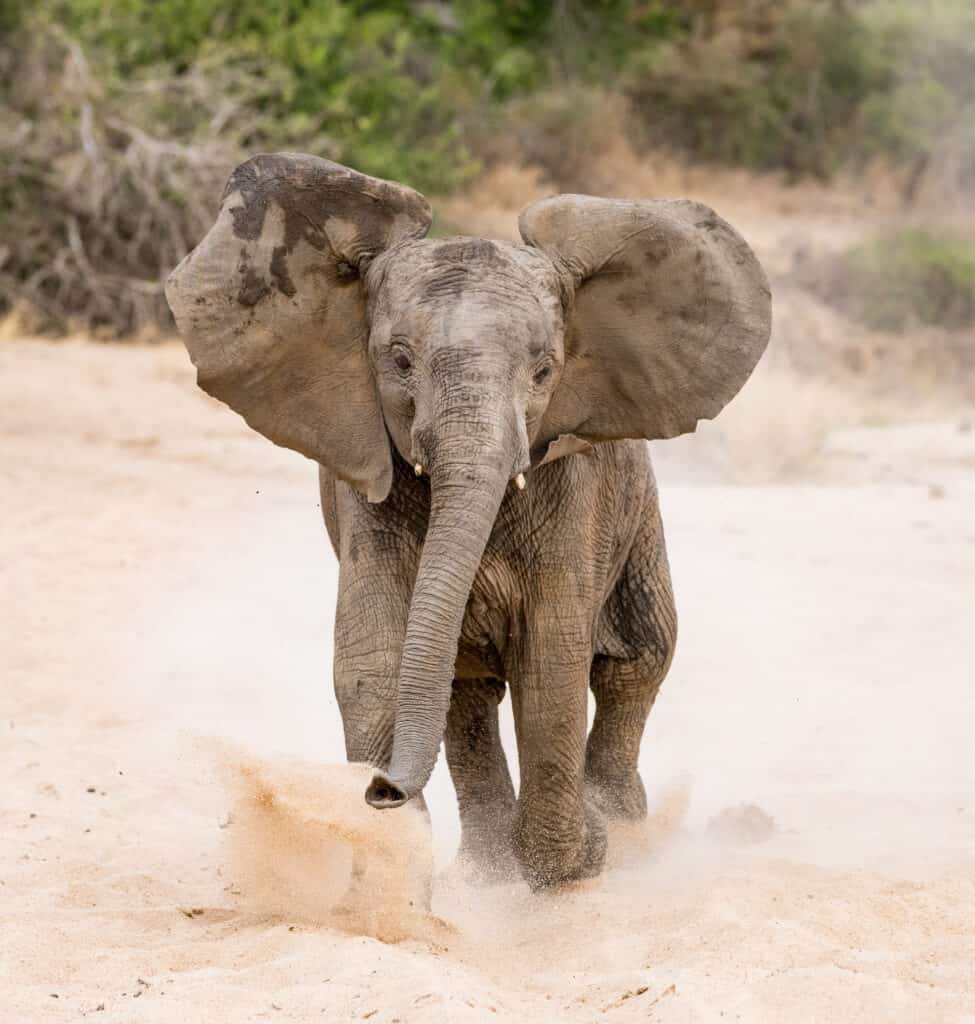Elephant tusks were a symbol of respect and stature in ancient African communities, and as time went by, their value grew immensely. The rising demand for ivory to make jewelry and other luxurious materials led to a spike in the killing of elephants.
Hunting elephants for ivory began as far back as the 16th century. But has it ended? Is this practice still happening? This article answers.
Are Elephants Still Killed for Ivory?

Every year, around 20,000 elephants are killed.
©Stu Porter/Shutterstock.com
At least 20,000 elephants are killed every year for their tusks. For several millennia and across many different cultures, ivory tusks have been considered luxury materials based on their durability and lustrous appearance. In more recent times, the value of ivory has only increased, further endangering elephants.
China is noted to be the largest consumer of ivory products, with the majority of smuggled ivory ending up on the Chinese market. Several business places in cities around China have numerous ivory products for sale, with the UK steadily exporting ivory to said regions.
Activities such as agricultural extension and land development drastically shrink the habitats of these animals, exposing them to danger at the hands of poachers.
In the 1980s alone, about 100,000 elephants were estimated to have been killed every year before a ban on international trade was enforced by CITES (Convention on International Trade in Endangered Species of Wild Fauna and Flora) in 1990.
The U.S. also placed a ban on ivory trade in a bid to protect elephants from extinction. Some exceptions were made for antiques and materials containing tiny amounts of ivory. Notwithstanding, reports have revealed that several elephants are still being hunted, and ivory is still being smuggled into the US. Globally, ivory trade is worth about $23 billion annually, which is a pretty hefty amount and provides a strong conviction to kill.
How Did Ivory Hunting Begin?

In 1977, 1.3 million elephants lived in Africa.
©Ondrej Prosicky/Shutterstock.com
In ancient times in Africa, ivory was very esteemed, and only great people were privileged to have and use it. As time went on, Europeans began to explore, and ivory was one of the commodities they took back with them.
They began actively hunting elephants with the aid of native Africans. The natives led the hunt into elephant habitats in search of the elephants for ivory.
In 1977, there were about 1.3 million elephants in Africa. Only two decades later, the population had dwindled by more than half. This realization fueled the need to rescue elephants from extinction leading to the CITES ban.
Places Where Ivory Hunting Occurs the Most
As you can probably tell, the majority of all-time elephant poaching cases have occurred in Africa. Ivory trade also has roots in India, and a great percentage of the demand for ivory originates from China.
Why Killing Elephants for Their Ivory Is Not Worth It
Besides the fact that elephants do not deserve to be killed off, there are several benefits that they provide to humans and their environments. One of these benefits is the generation of revenue.
Elephants are a wonder to behold, and people travel long distances just to see them up close. Countries that are native homes to elephants (India for example), can generate substantial revenue by offering tours and sightseeing events for tourists.
The services of forest animals are estimated to be worth almost 2 million dollars per animal, as opposed to the 40,000 dollars a poacher would be paid to kill for ivory.
Practices to Safeguard Elephants
Keeping elephants alive has far greater advantages than killing them. We have to consciously make efforts to preserve these magnificent mammals.
1. Opposing Illegal Ivory Trade
Every single piece of ivory, be it a piece of jewelry, or a full tusk, means a dead elephant. At this rate, elephants will be extinct in a couple of decades. Results from the Great Elephant Census released in 2016 revealed that only about 350,000 savanna elephants were found in 18 countries.
The decline in numbers gets worse as the demand for ivory increases. Illegal ivory trade should not be allowed to continue.
2. Reinforcing Anti-Poaching Measures
Governing bodies must ensure constant monitoring and protection of these mammals. They must be kept in protected habitats, and man’s activities must be restricted from affecting them.
3. Strengthening Anti-Smuggling Regulations
Penalties for smuggling should be raised higher, and tighter security measures must be taken to ensure that smuggling ivory is put to a stop.
Up Next:
- Do Elephants Have Teeth? Their Dentition and Tusks Explained
- Where Do Elephants Live? Their Habitats Explained
- Types of Elephants: The 3 Species of Elephants
- New Study: After Years of Poaching, Elephants Change Their Evolutionary Trajectory
- Why Do Elephants Hold Tails When They Walk?
The photo featured at the top of this post is © JohnEGoodwin/Shutterstock.com
Sources
- , Available here: https://www.sciencedirect.com/science/article/pii/S0006320714003371
- , Available here: https://africa.si.edu/research/conservation/protect-ivory/
- , Available here: https://wwf.panda.org/discover/knowledge_hub/endangered_species/elephants/african_elephants/afelephants_threats/
- , Available here: http://www.jstor.org/stable/41409885
Thank you for reading! Have some feedback for us? Contact the AZ Animals editorial team.






